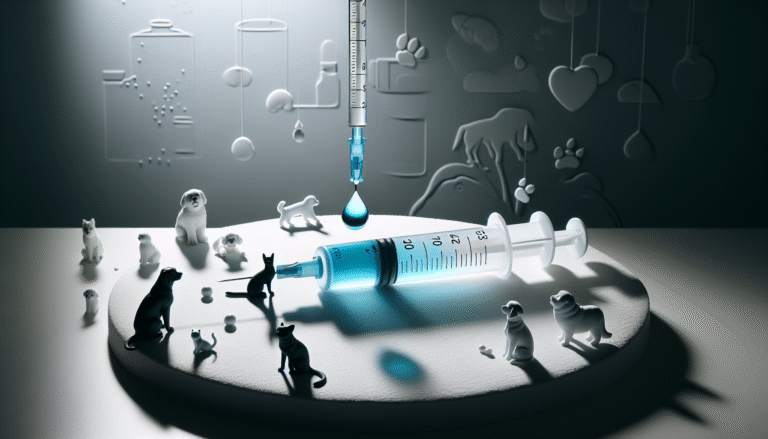Have you ever pondered the dangers lurking in seemingly harmless outdoor activities? You may find it shocking to learn about the risks associated with brain-eating parasites, particularly ones like Baylisascaris procyonis. Recent cases in Los Angeles involving a teenager and a toddler have brought this issue to the forefront. Understanding how these infections occur, their symptoms, and preventative measures can be vital for safeguarding your health and that of your loved ones.
Understanding Baylisascaris Procyonis
Baylisascaris procyonis is a parasite typically found in raccoons. You might wonder how this common animal could pose such a grave risk to human health. Well, the parasite infects the intestines of raccoons, leading to the excretion of eggs through their feces. If you’re not careful, these eggs can end up in soil or on surfaces where you or your children play, presenting a serious health threat.
Transmission Pathways
You may ask yourself, how does one become infected? The transmission is often via contaminated soil or surfaces where raccoon feces have been present. It doesn’t stop there, though. If someone has a pet dog that goes outside and interacts with these contaminated areas, the risk of transmission increases even further. It’s important to note that the eggs can survive in the environment for several years, making it easy for them to be inadvertently ingested.
Cases Reported
Recently, two cases in Los Angeles have raised awareness about the dangers of Baylisascaris procyonis infection. A 14-year-old boy and a 15-month-old toddler both contracted this parasite, leading to vastly different health outcomes. Understanding their stories can help you comprehend the severity of infections caused by this parasite.
The Teenager’s Experience
The teenager exhibited several symptoms that eventually led him to seek medical attention. Initially confused and struggling to maintain an unsteady gait, his condition progressively worsened. After hospitalization, doctors used brain imaging to diagnose his infection, affirming the alarming presence of the parasite in his central nervous system.
The Toddler’s Situation
In contrast, the 15-month-old toddler displayed signs of lethargy and motor weakness that went unrecognized for too long. By the time doctors tested and confirmed the infection, significant damage had already occurred. This highlights the importance of early detection and intervention, as prompt treatment can often make the difference between a full recovery and lasting impairments.
Symptoms of Infection
You might wonder what signs to look for if a Baylisascaris procyonis infection is suspected. Symptoms can vary widely but often include:
| Symptom | Description |
|---|---|
| Fatigue | Constant tiredness or lack of energy. |
| Confusion | Difficulty in processing information or disorientation. |
| Unsteady Gait | Instability while walking or a noticeable change in balance. |
| Seizures | Episodes of abnormal electrical activity in the brain. |
| Cognitive Impairments | Trouble with thinking, learning, or remembering. |
Severity of Infection
The severity of symptoms can escalate quickly. Infections may cause damage to the brain and lead to long-term complications or even death if not treated promptly. For instance, the toddler’s delay in receiving proper medical care resulted in lasting neurological impairments.
Medical Treatment
Once an infection is confirmed, it is vital to initiate treatment immediately. Both the teenager and the toddler were put on a treatment regimen that included:
- Albendazole: This medication serves to fight off the parasite.
- Corticosteroids: These help reduce inflammation in the brain caused by the infection.
The treatment lasted for six weeks, and while the teenager made a full recovery, the toddler’s challenges continued.
Importance of Early Intervention
Bringing attention to the importance of early intervention cannot be overstated. In this case, swift action and diagnosis were critical for the teenager’s recovery. However, the toddler’s delayed treatment underscores the potentially devastating outcomes of waiting too long to seek help.
Preventative Measures
Now that you’re aware of the risks and symptoms associated with Baylisascaris procyonis infections, the next question might be, what can you do to prevent these infections from occurring in the first place? The CDC offers crucial guidance aimed at reducing infection risk, especially for children.
Keep Children Away from Raccoons
One of the simplest but most effective preventative measures is avoiding contact with raccoons and their feces. Whether you see them in your backyard or nearby parks, teaching your children to steer clear is paramount. Explain to them that raccoon feces can look like small brown, fluffy piles and can be extremely dangerous.
Safe Play Areas
Ensure that your children play in clean areas—preferably ones that are well-maintained and free from animal feces. If you live in an area frequented by raccoons, consider using smooth surfaces like concrete or safety-grade playground materials instead of dirt, which could harbor the parasite’s eggs.
Pet Care and Responsibility
If you have pets, especially dogs, make sure they don’t have access to raccoon droppings or contaminated areas. Regular vet check-ups and proper hygiene practices can help keep your pets healthy, while also reducing the chance they may carry the parasite back into your home.
Washing Hands and Hygiene
Instilling good hygiene practices in your children is imperative. Encourage them to wash their hands thoroughly after playing outside. Using soap and water for at least 20 seconds is a great habit that can help eliminate pathogens that may be lingering on their hands.
Understanding the CDC’s Role
The Centers for Disease Control and Prevention (CDC) plays a vital role in monitoring and providing information about Baylisascaris procyonis infections. They regularly update guidelines and statistics, educating the public about the risks associated with this parasite.
Research and Updates
The CDC is involved in ongoing research to understand the transmission patterns, develop treatments, and assess the prevalence of infections. Staying updated with CDC announcements can enhance your awareness and keep you informed about any new preventive measures or treatments being developed.
Community Education Initiatives
In addition to research, the CDC conducts community education initiatives aimed at raising awareness about raccoon-associated risks. By participating in or accessing these educational tools, you can help promote awareness within your local community.
Conclusion
The cases of Baylisascaris procyonis infections in Los Angeles serve as a stark reminder of the potential dangers present in our environment. By understanding how these infections occur, recognizing symptoms, and implementing preventative measures, you can greatly reduce the risk of infection.
Being informed means being empowered. Take the time to educate your family about the risks associated with raccoon feces and the importance of hygiene and safety when playing outdoors. By remaining vigilant and cautious, you can help protect yourself and your loved ones from these serious health threats. Remember, your vigilance today can lead to a healthier tomorrow.



